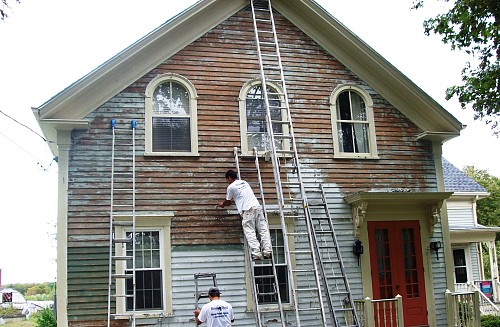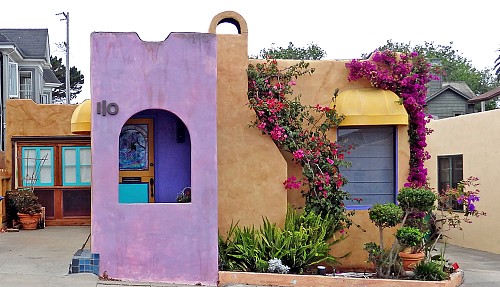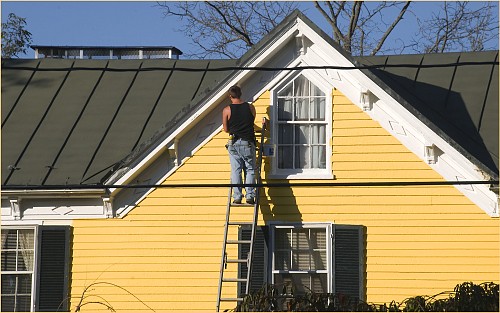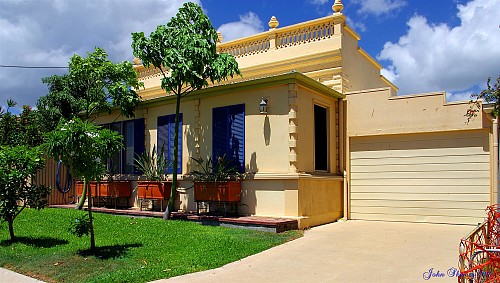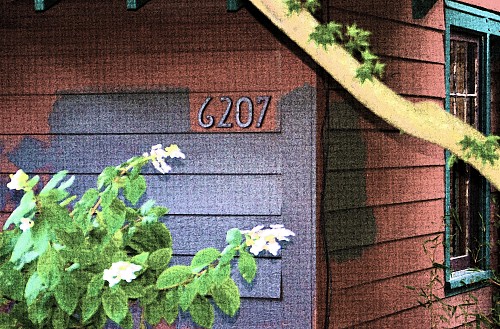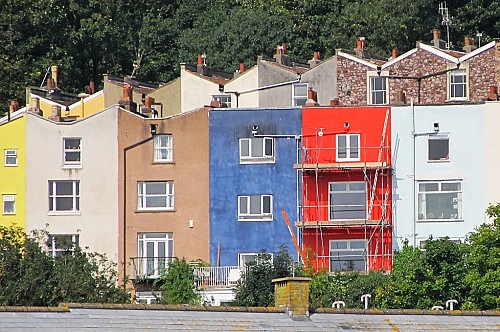How Much Does it Cost to Paint Your House Exterior?
If you're looking at the cost to paint a house exterior, you’ll find that professional painting prices run from about $1,000 to $7,000 for a 2000 square foot home. Generally, though, the average cost is between $1,500 and $4,000 for the work, or $0.75-$2.00 per sq ft.
Why is there such a wide range of prices for exterior house painting?
Well, internet research is a great way to do your homework and prepare for home improvement projects, but you can only get a general idea of house painting labor costs by reading articles. By contrast, your painting contractor near you will come to your home in person and make a quote based on your individual house and its characteristics.
How Your House’s Characteristics Affect Painting Cost
Here are the main factors that will affect the cost to paint a home's exterior:
- Siding material. What kind of material is your home sided with? Siding materials ranked in order from cheapest to most expensive to (re)paint are aluminum siding, concrete siding, vinyl siding, wood siding, stucco siding, and brick siding.
- Condition of your siding and amount of prep required. While removing the old paint probably won’t be necessary, if your siding is in rough shape, there may be a lot of prep work involved. You may also need multiple coats of paint to get the job done, which can impact the paint costs. Tasks like washing your home's exterior, getting rid of flaking paint, and repairing any damage are all time-consuming and will add to the overall house paint cost.
- Paintable area. Two homes which are listed as the same square footage on the property tax rolls may have very different amounts of paintable area. For example, enormous picture windows will reduce the total area to be painted. Easily calculate your own home’s paintable area: measure its perimeter and multiply by its height from foundation to roof. Then subtract the area of doors and windows. (Standard square footage of a door is 21; of a window, 12 square feet.)
- Trim. Painting features such as ornate trim, molding, shutters, columns, gutters, and so on is also labor-intensive, which once again raises the price of the paint job.
- Number of stories. It’s not only the size of your home in square feet but its height as well that determines the difficulty of the job. If you live in a two-story house, the exterior painting cost may be higher. Painting the upper floors of a multi-story house often requires the use of scaffolding for accessibility and typically costs more.
- Location. Where you live is usually a major factor in the cost of any home improvement, and exterior painting is no exception. The average cost of local painters or a painting company in urban centers tends to be higher. On the other hand, if your home is deep in the woods, a house painting firm might add their travel time to the total exterior painting cost.
Price Per Hour For Exterior House Painting
As a rule, the most experienced painting company or professional painting contractors will present you with an estimate that covers the total cost of the entire painting project, rather than breaking down time and materials.
While you might be tempted to hash out an hourly rate for labor costs instead, experts usually advise against it. Paying an exterior painter by the hour means you (and he) have no clear-cut way of ensuring how long the job will take. It’s better to have a good idea how much you’ll end up paying before your painting contractor gets started.
However, if you happen to have a strong preference for this pricing method, expect the cost per hour to range between $25 and $75, with materials on top of that.
Exterior Painting Return on Investment
Applying a new coat or two of paint is well known as a home improvement that yields a high return on investment (ROI), otherwise known as lots of bang for your buck. And this relatively inexpensive upgrade is likely to pay off big time when you sell your house. Here’s why.
Your home's exterior is literally the first thing that visitors see when they come to a real estate viewing, so freshly painted siding makes a fantastic impression in terms of curb appeal. Because prospective buyers tend to prefer move-in ready properties that won’t need a lot of work on their part, your newly painted house will take a prominent place on their “worth considering” list.
Not only that, even choosing just the right paint color and paint quality can pay off. According to Zillow, home exteriors painted gray-beige (yes, “greige”) upped the average selling price by nearly three and a half thousand dollars. Pair that with a navy blue front door and you’re looking at an extra $5,000 profit.
Average Cost Components
The total cost to paint the exterior of a house is made up of:
- Labor – Typically, the bulk of your exterior house painting cost goes toward labor. Your contractor will not only prime and paint the outside of your home, but take care of prep work too.
This may include professional pressure washing (low pressure only, please!), window caulk touchup, and scraping or power brushing off flaking paint. In addition, it might be necessary to repair wood rot or other damage. - Paint -- The paint itself is a much smaller cost component, but it will make a huge difference to the finished product. So don’t cheap out by skimping on paint. Instead, choose a high quality paint, that's also a weather-resistant exterior latex paint so that your home will look great, and stay that way for longer – up to 10 years, as opposed to 4-5 years with a less expensive type.
The formula to figure out how much paint you’ll need: 1 gallon of exterior paint is enough to cover 250-400 square feet of surface, based on one coat.
You are likely to need a larger quantity of paint if your siding has never been painted before, if it is especially rough and/or porous, or if you are making a major color change.
Fungicidal or flame-resistant premium paint may be a worthwhile investment, depending on your local conditions. - Additional Supplies and Equipment – Usually incidental supplies such as caulk, as well as equipment (rollers, drop cloths, ladder, etc.), will be furnished by your contractor and included in the total painting cost.
- Cleanup -- Cleanup is typically included in the job.
- Estimate -- The initial estimate, which should include an onsite inspection, is often free. If a pro does charge for his estimate, often he will deduct this charge from the total cost of house painting.
- Warranty – A good house painter will provide a 2-3 year warranty against defects in workmanship.
Choose the Best Painter for the Job
Get multiple bids from reliable painting contractors in your area. Don’t automatically jump at the lowest price; compare all the details of what each painter’s quote includes.
Look for a well-established local professional painter or painting business, with verifiable references. A journeyman painter is desirable; that means someone who has completed a 3- or 4-year apprenticeship program.
For the best exterior paint job, be careful to hire a licensed pro. In fact, many states require licensing for house painting businesses. There are (at least) two good arguments against hiring unlicensed house painters: 1) even if you sign a contract with them, it may not be legally enforceable, and 2) your homeowner's insurance might not cover you against accidents or theft.
And make sure your contractor is bonded and insured, with up-to-date, adequate worker's compensation and liability insurance.
Get the Most for Your Money
- Save money on painting your house-- cut the cost of labor by tackling some of the work yourself. Most painting prep can be successfully completed by an experienced DIYer, so you’ll pay the pro only to actually apply primer and paint.
- If you have serious cracking or flaking issues, don’t try to patch them up. Repainting over a flawed surface is guaranteed not to yield a result you will love … or even like. Better to strip your house right down to the bare siding, then start afresh with new paint.
- Calculate how much paint you will need along with how many coats you expect to do and save money by purchasing your chosen color in 5-gallon drums instead of individual cans. Be careful not to overbuy, but if you do wind up with leftover paint, you may be able to return unopened containers.
- Before you start your house painting project, look online for home improvement store moving coupons, newsletter signup bonuses, and other promotional offers that can be applied to your paint purchase.
- Schedule the exterior painting wisely, keeping an eye on the weather forecast. Mild temperatures -- not too hot or too cold -- are best, with relative humidity between 40 and 70 percent. This ensures that your house paint will dry correctly.
- Add enormous curb appeal by investing in a fresh coat of paint that makes your home stand out … in a good way.
Cost to Hire a Painter
Articles and Tips

Choosing Paint Colors: What Different Colors Mean
Which color will you choose? Updating a room with paint is a great and inexpensive way to give... Read More
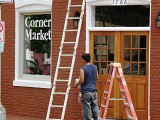
Tips For Saving Money On Paint
Painting can get expensive, especially when you opt for high-quality, lasting paints with good coverage... Read More
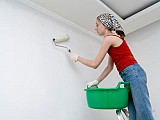
Residential Interior Painting Tips
If your house is starting to seem drab or out of style, you can brighten up an entire room with... Read More
